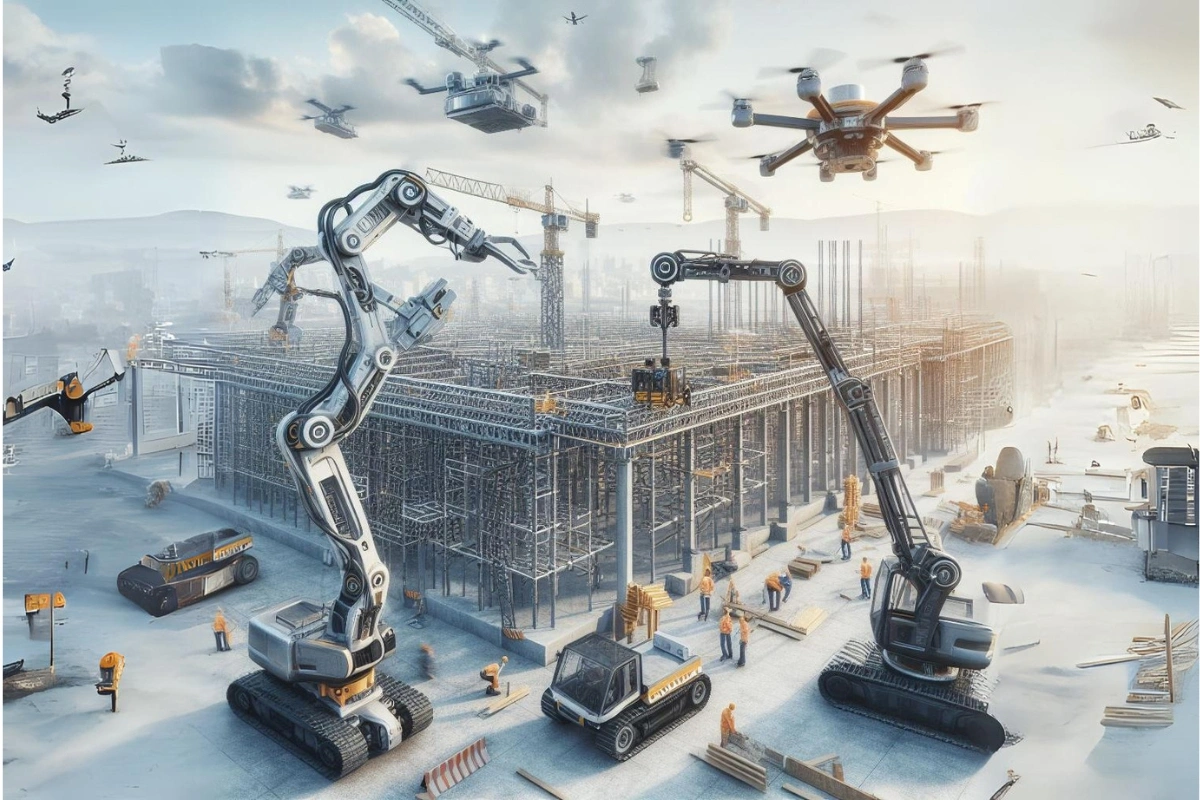
Building renewal technologies are essential to creating sustainable urban environments. As we confront challenges like climate change, resource depletion, and rapid urbanization, innovative solutions in the renovation and enhancement of existing buildings become increasingly vital. This comprehensive guide will delve into the latest advancements in building renewal technologies, highlighting their benefits, challenges, and future prospects.
Understanding Building Renewal Technologies
Building renewal technologies refer to the modern methods and materials used to retrofit and enhance existing structures, aiming to improve their efficiency, sustainability, and overall livability. These technologies focus on reducing energy consumption, minimizing waste, and extending the life of buildings, all while fostering a healthier environment.
The Importance of Building Renewal
With urban populations on the rise, it’s crucial to upgrade existing buildings to meet contemporary standards. Building renewal not only enhances performance but also plays a significant role in reducing greenhouse gas emissions. The International Energy Agency reports that buildings account for almost 40% of global energy use and contribute to one-third of CO2 emissions. Thus, optimizing existing structures is essential for a sustainable future.
Historical Context of Building Renewal

Evolution of Building Technologies
Building technologies have evolved from basic structures for shelter to sophisticated systems prioritizing energy efficiency and sustainability. Early materials like timber and stone have been replaced by modern materials such as steel, glass, and composites, which offer greater durability and flexibility.
Key Milestones in Building Renewal
The movement toward building renewal gained traction in the late 20th century, spurred by increasing environmental awareness. Significant milestones include:
- Energy Star Program (1992): Promotes energy efficiency in buildings.
- LEED Certification (2000): A globally recognized standard for sustainable building practices.
- International Energy Conservation Code (IECC): Frequently revised to include the most recent advancements in energy-saving technologies.
Types of Building Renewal Technologies
Energy Efficiency Improvements
Insulation Upgrades
Effective insulation is essential for regulating indoor temperatures and lowering energy usage. In 2024, innovative materials such as aerogels and vacuum-insulated panels offer exceptional thermal resistance, ensuring that buildings remain comfortable year-round.
Energy-Efficient Windows and Doors
Advanced technologies like low-emissivity (Low-E) glass and triple-glazing have significantly improved the energy performance of windows, reducing heat loss and enhancing indoor comfort.
HVAC System Retrofitting
Upgrading HVAC systems with smart thermostats and energy recovery ventilators can lead to substantial energy savings. Newer systems optimize airflow and minimize energy use while maintaining a comfortable indoor environment.
Sustainable Materials
Recycled and Repurposed Materials
The use of recycled materials in construction has become increasingly common in 2024. From reclaimed wood to recycled metal, these materials help reduce waste and lower the carbon footprint of building projects.
Low-Impact and Non-Toxic Materials
Sustainable practices increasingly prioritize non-toxic and low-impact materials like bamboo, cork, and recycled plastics. These materials are more environmentally friendly and pose fewer health risks to occupants.
Smart Building Technologies

IoT Integration for Building Management
The Internet of Things (IoT) has revolutionized building management. Smart sensors and interconnected devices enable real-time tracking of energy consumption, occupancy, and environmental factors, improving both efficiency and comfort.
Automation Systems for Energy Savings
Automated systems, including smart lighting and HVAC controls, adjust based on occupancy and environmental factors, ensuring optimal energy use and minimizing waste.
Renewable Energy Integration
Solar Panel Installations
The adoption of solar panels has surged, with technological advancements leading to more efficient and affordable options. By 2024, solar energy is a common feature in building renewal projects, contributing to energy independence and sustainability.
Wind Energy Solutions
Wind turbines are increasingly being integrated into urban designs, providing a renewable energy source that complements solar power, particularly in high-wind areas.
Geothermal Heating and Cooling
Geothermal systems utilize the earth’s consistent temperatures for heating and cooling, leading to a substantial decrease in energy usage. These systems are gaining traction as a viable option for both residential and commercial buildings.
Benefits of Building Renewal Technologies
Environmental Impact
Building renewal technologies significantly reduce the carbon footprint of the built environment. A 2023 report from the United Nations Environment Programme states that retrofitting existing buildings could cut global CO2 emissions by up to 50%.
Economic Advantages
Investing in building upgrade technologies can lead to considerable savings. Energy-efficient buildings benefit from lower utility bills, and many jurisdictions offer incentives for upgrades. Additionally, these improvements can increase property values, making them a smart financial decision.
Social Benefits
Modern building renovation technologies enhance occupant comfort and well-being. Improved air quality, natural lighting, and thermal comfort contribute to better well-being and productivity. A 2023 study by the Harvard T.H. Chan School of Public Health found a direct correlation between green building features and improved health outcomes for occupants.
Challenges and Barriers
Financial Hurdles
While the long-term savings from building renewal technologies are significant, the initial investment can pose a barrier for many property owners. Access to financing options and incentives can help mitigate these challenges, but many remain unaware of available resources.
Regulatory and Compliance Issues
Navigating building codes and regulations can be complex. Compliance with local standards is essential, and outdated codes can hinder the adoption of new technologies.
Technological Barriers
Incorporating advanced technologies into existing buildings typically demands specialized expertise and training. There is an increasing demand for professionals who are proficient in both traditional construction methods and contemporary technology.
Click Here: Metal Building Homes: A Modern and Sustainable Living Solution
Future Trends in Building Renewal Technologies

Predictions for Advancements
The future of building renewal technologies is promising, with innovations expected in areas like nanomaterials, artificial intelligence, and advanced automation. These developments will further enhance energy efficiency and occupant comfort.
The Role of Government Policies
In 2024, government policies are increasingly supportive of sustainable building practices. Incentives for energy efficiency upgrades and renewable energy installations are becoming standard in many regions.
Community-Driven Initiatives
Community engagement in building renewal projects is gaining traction, with local organizations advocating for sustainable practices and funding collaborative renovation efforts.
FAQs
- What are building renewal technologies? Building renewal technologies involve innovative methods and materials used to retrofit and enhance existing structures for improved energy efficiency and sustainability.
- Why is building renewal important? Building renewal is crucial for reducing energy consumption and greenhouse gas emissions, helping combat climate change while enhancing the livability of urban spaces.
- What types of technologies are used in building renewal? Common technologies include energy-efficient insulation, smart building systems, renewable energy sources like solar panels, and sustainable materials.
- What are the benefits of implementing building renewal technologies? Benefits include lower energy bills, increased property value, improved occupant health and comfort, and reduced environmental impact.
- What challenges do building renewal projects face? Key challenges include financial barriers, regulatory compliance, and the need for specialized knowledge in integrating new technologies.
Conclusion
Building renewal technologies represent a critical pathway toward achieving sustainable urban environments. By leveraging innovative materials and methods, we can transform existing structures into efficient, healthy, and environmentally friendly spaces. Stakeholders—including policymakers, builders, and occupants—must collaborate to embrace these technologies and promote a sustainable future.
Learn more about emerging trends at Future Trendz.







